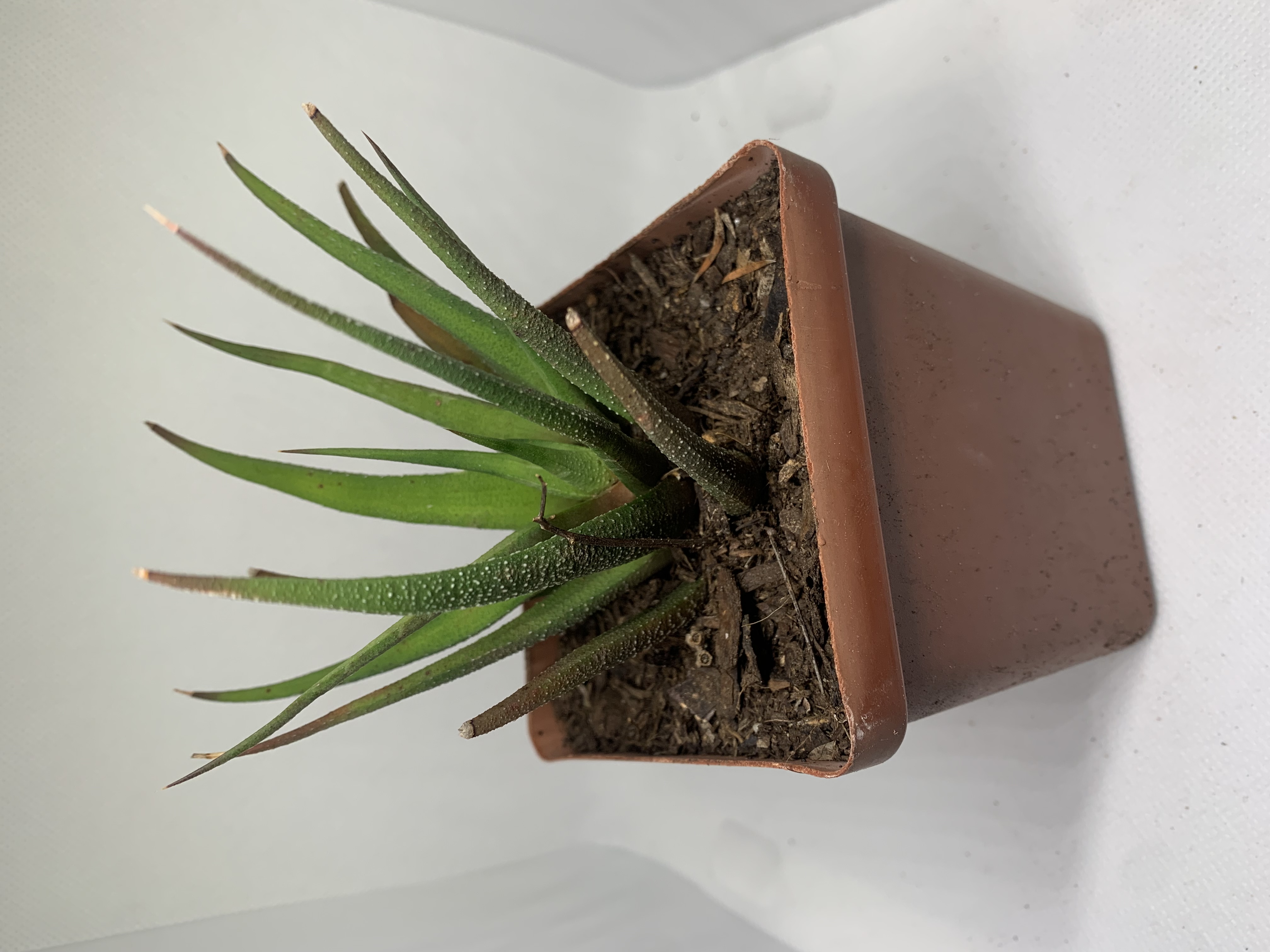
Haworthia attenuata var. glabrata
R40.00
Out of stock
Family: Asphodelaceae
Synonym: Often included within Haworthiopsis attenuata
Haworthia attenuata var. glabrata is a popular succulent variety recognized for its smooth, glossy leaves and compact rosette growth. It differs from the typical Haworthia attenuata mainly by having fewer or no tubercles (raised white bumps) on the leaf surfaces, giving the leaves a sleeker, shinier appearance.
Origin and Habitat
Native to the Eastern Cape Province of South Africa, Haworthia attenuata and its varieties grow naturally on rocky slopes and shaded areas where they receive filtered sunlight. The environment is characterized by well-draining soils and a mild climate with dry summers and moist winters.
Plant Description
This variety forms dense rosettes of thick, tapering, dark green leaves that are smooth and glossy on their upper surfaces. Unlike the typical variety, the leaves of var. glabrata are mostly free of the white tubercles, although the leaf edges retain small white teeth.
The plant grows slowly, typically reaching 7–10 cm in height and width. Flowering produces small, tubular, white or pale pink flowers on thin stalks, usually in late winter or early spring.
Care Instructions
Light
Prefers bright, indirect light to partial shade. While it tolerates some direct sun, intense midday sun should be avoided to prevent leaf damage.
Watering
Water deeply but only when the soil has dried out completely. During the growing season (spring through autumn), water about every 2–3 weeks. In winter, reduce watering to once a month or less.
Soil
Needs well-draining soil. A mix of:
2 parts cactus or succulent potting soil
1 part pumice or coarse sand
1 part perlite or grit
Good drainage is critical to prevent root rot.
Temperature
Grows best between 18°C and 27°C and can tolerate temperatures down to about 5°C if kept dry and frost-free.
Additional Information
Haworthia attenuata var. glabrata offsets readily, forming clumps over time that can be separated for propagation. The smooth leaves and compact growth habit make it a favored choice for succulent collections and container growing.
Pests are rare but may include mealybugs. Proper watering and airflow reduce the risk of fungal problems and pest infestations.
Plants
Explore our rare cycads, clivias, and succulents.
Shop
Garden
© 2025. All rights reserved.
(WhatsApp)
